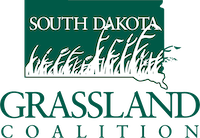As grassland resources across the northern prairies continue to decline, it is important to manage what remains as efficiently as possible. The most common practice used to manage grasslands is grazing with livestock. Ranchers and other landowners have varying objectives and options for implementing grazing strategies on lands they manage. To better understand certain aspects of these grazing management options, Ducks Unlimited conducted a study at a 9,500-acre native prairie ranch located on the McPherson-Edmunds County line in north-central SD, during 2009- 2011 to evaluate the impact grazing treatments commonly implemented across the region had on duck production and yearling cattle performance.

